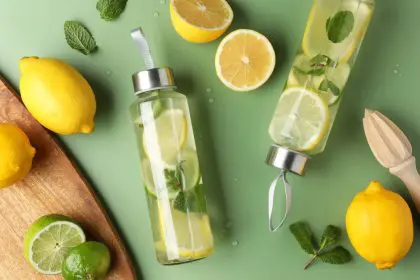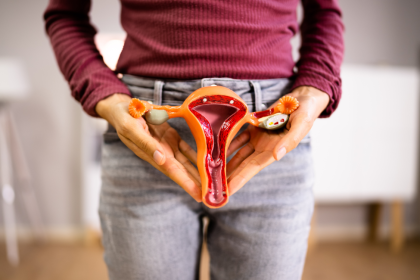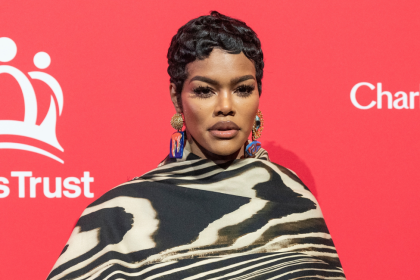That weekly oil massage that promises to transform your dry, brittle strands into flowing, glossy tresses? It might actually be doing more harm than good. While generations have sworn by traditional hair oiling, modern hair science has uncovered some uncomfortable truths about this ancient practice that might make you reconsider your routine.
Let’s face it. Pouring oil on your scalp feels like you’re doing something deeply nourishing. It’s tactile. It’s sensory. It connects you to rituals passed down through generations. But sentimentality aside, your hair deserves better than what your grandmother’s favorite remedy can provide.
The oil barrier blocking real moisture from reaching your hair
Here’s what actually happens when you slather oil on your strands. Unlike water-based treatments, oils create an occlusive layer around each hair shaft. That might sound beneficial, but this waxy coating prevents genuine hydration from penetrating, leaving your hair internally parched despite feeling temporarily smoother.
The reality is that hair needs water-based moisture first and foremost. Healthy hair maintains a delicate balance of hydration sealed with natural oils. When you apply oil to already dry hair, you’re essentially locking in the dryness while creating a deceptive outer sheen that washes away with your next shampoo.
For curly and coily hair types, this problem becomes even more pronounced. These textures are naturally more porous and in greater need of water-based hydration. The heavy oils many rely on can weigh down curls, disrupt natural pattern formation, and actually increase the appearance of frizz once the temporary coating wears off.
The dirty truth about extended oil treatments
That overnight oil soak might be doing something you never anticipated, feeding the microorganisms that live on your scalp. When oils sit for hours, they create the perfect environment for fungal growth, potentially leading to dandruff, scalp irritation, and folliculitis.
The longer oils remain on your scalp, especially heavy ones like coconut and olive, the more they can clog hair follicles. This blockage prevents sebum, your scalp’s natural oil, from flowing properly, disrupting your skin’s microbiome and potentially leading to hair thinning over time.
What’s more concerning is how difficult these heavy oils are to remove. Most require multiple shampoo sessions, leading many to overcompensate with harsh cleansers that further strip the hair. This creates a damaging cycle of over-oiling and over-cleansing that leaves hair increasingly damaged.
The molecular mismatch modern science has uncovered
Not all oils are created equal when it comes to hair care. The most popular traditional oils, including coconut, olive, and castor, contain molecules far too large to actually penetrate the hair shaft. Instead of “feeding” your hair as marketing would have you believe, these oils simply sit on the surface.
Coconut oil, despite its cult following, has been shown to increase protein loss in certain hair types, particularly fine or low-porosity hair. The very properties that make it solidify at room temperature can cause brittle, stiff strands and exacerbate breakage in vulnerable hair.
Even more problematic is how these heavy oils interact with styling products. They create a barrier that prevents your conditioners, leave-ins, and styling products from properly bonding with your hair. That expensive hair mask you’re using after your oil treatment? It’s likely sliding right off those oil-coated strands.
The science-backed alternatives transforming modern hair care
Enter the new generation of hair treatments that work with your hair’s biology rather than against it. Humectants like glycerin, propylene glycol, and aloe vera actually attract water molecules to your hair shaft, delivering genuine hydration rather than just a surface coating.
Water-based leave-in conditioners containing lightweight emollients provide both moisture and protection without the heavy, greasy aftermath of traditional oils. These formulations are designed to penetrate the cuticle, reinforcing hair from within rather than masking problems from without.
For those missing the sensory experience of scalp massage, modern scalp serums containing ingredients like niacinamide, peptides, and hyaluronic acid deliver nutrients that actually support follicle health while maintaining the therapeutic benefits of massage without the downsides of heavy oils.
The strategic approach that outperforms traditional oiling
Modern hair science takes a targeted approach that traditional oiling can’t match. Pre-shampoo treatments containing lightweight oils like jojoba or squalane help protect hair during cleansing without suffocating the scalp or creating stubborn buildup.
For those with high-porosity or damaged hair, bond-building treatments work at the molecular level to repair broken disulfide bonds within the hair shaft. These treatments don’t just mask damage like oils do, they actually repair structural integrity, reducing breakage and improving elasticity.
Post-wash, water-based leave-in conditioners followed by hair oils specifically formulated as “finishing oils” create the ideal moisture-seal combination. These modern oils, often containing argan, moringa, or camelia, are refined to remove impurities and engineered with molecules small enough to interact meaningfully with your hair structure.
The customization factor traditional methods lack
Perhaps the biggest limitation of traditional oiling is its one-size-fits-all approach. Modern hair care recognizes that fine, straight hair has fundamentally different needs than thick, coily textures. Today’s alternatives offer customized solutions for specific concerns.
For fine hair prone to oiliness, lightweight mists containing panthenol and rice protein provide strength and protection without weight. For thicker textures needing more intense nourishment, cream-based treatments with plant butters and lightweight oils offer rich moisture without the downsides of raw oils.
For those with scalp issues, targeted treatments containing zinc pyrithione, salicylic acid, or tea tree oil address specific concerns while balancing the scalp microbiome. This precision approach delivers better results than the catch-all oil treatments of the past.
The bottom line on modern hair nourishment
Abandoning traditional oil treatments doesn’t mean giving up on healthy, beautiful hair. In fact, embracing scientifically-advanced alternatives often leads to better results with less product, less time, and less frustration.
The best approach combines genuine hydration with appropriate sealing methods, working with your unique hair porosity and texture rather than fighting against it. Understanding that moisture comes from water, not oil, transforms how you approach hair care from the ground up.
Your hair deserves care based on actual trichology, not just tradition. While there’s something beautiful about connecting to cultural hair practices, there’s also wisdom in evolving those practices as our understanding grows. Your grandmother meant well with her oil treatments, but your hair will thank you for embracing what modern hair science has to offer.















